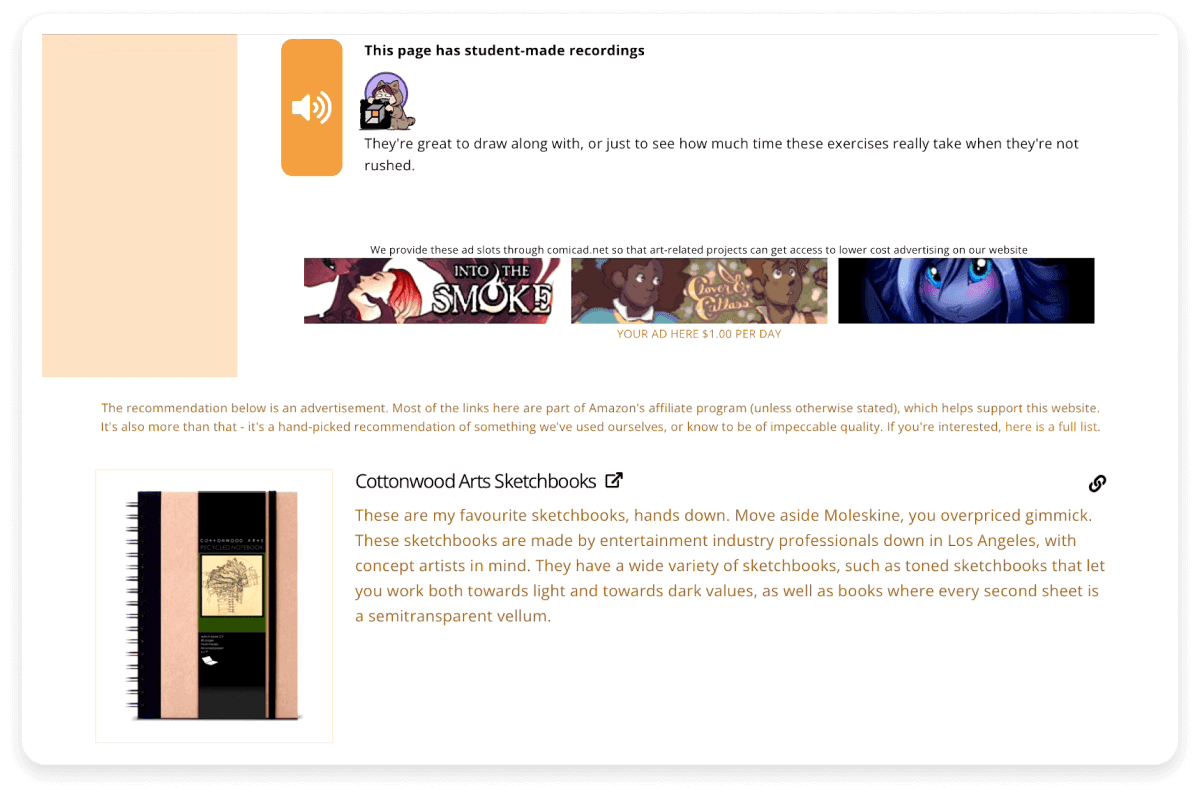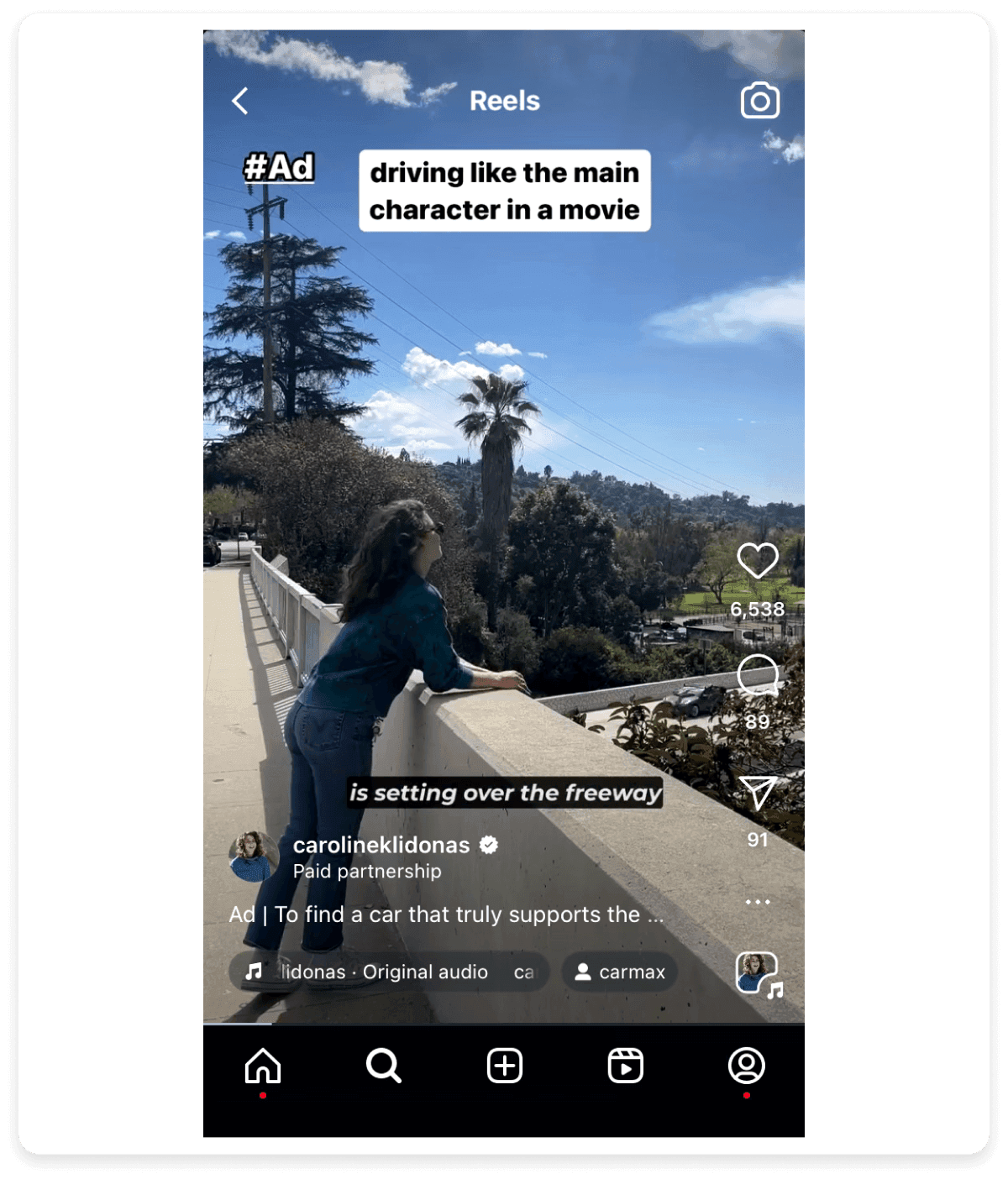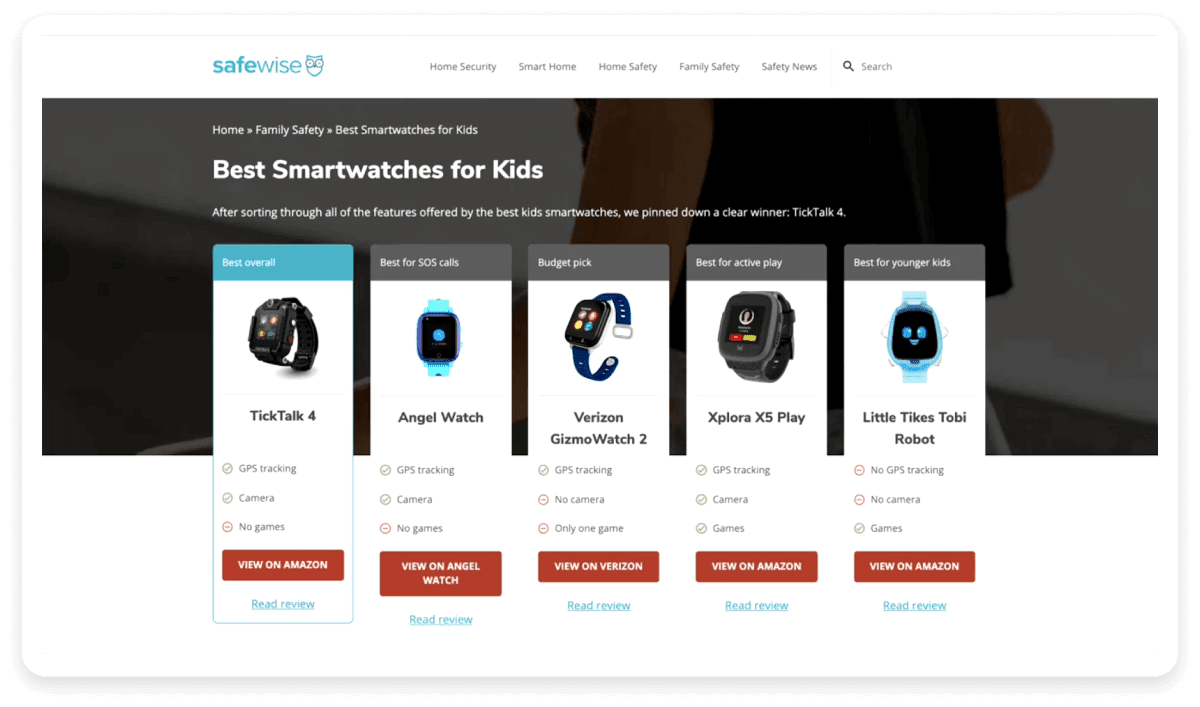How to choose the right channel
Affiliate marketing is a performance-based income stream that allows you to reach audiences across the globe. The challenge of an affiliate marketer is to choose the right channel to provide product recommendations in a way that is useful and accessible to your audience. The first step in this is to choose the right channel by keeping in mind the following key considerations:
Target audience
Proper awareness of your target audience is vital to becoming a good affiliate marketer. You must have a clear understanding of the demographic factors of your audience such as their age, location, interests, etc. For instance, if your target audience is young people in urban areas, you may want to use a channel such as Instagram that is more popular with that audience.
Type of product
The product you are promoting will greatly influence the channel to use for affiliate marketing. Certain products can be better showcased in different content formats. For instance, if you are promoting a feature-rich email marketing software, you may want to choose channels such as a blog post to help you communicate these features effectively and at length.
Budget and resources
Some channels such as paid ads may be cost-intensive but require very little investment in terms of time. Other channels may be more cost-effective but require you to spend more time to use them effectively. This is an important consideration while choosing your affiliate marketing channel depending on what resources you have available.
Identify the business model
Affiliate marketing can follow B2B, B2C, or even C2C business models. The channel that you choose to promote your product will vary based on your business model. For instance, Instagram Reels and YouTube videos might be effective in a B2C or C2C model but may not be the best channel in a B2B model.
Affiliate program restrictions
There are often conditions placed by the affiliate program that you are participating in. For instance, not all affiliate marketing programs may allow you to use paid ads to promote their products. There might also be other restrictions that you may have to follow.
Competition
You may also want to consider the existing competition in your niche in any specific channel. This will also determine how easily you can rank among the top resources in that niche. If you feel like a particular channel, say YouTube is already overcrowded with videos on your type of product, you may choose other channels that can help you reach your audience more easily.
Once you have considered the above-mentioned factors, you can choose a channel that best suits your needs. Here are the top 8 channels and ways in which you can use them to promote your affiliate links.

1. Blog posts
Blog posts are a great channel to provide value to your audience. Regular blog posts can help you to build credibility and establish yourself as an industry expert. A well-optimized blog post is also a good idea to attract organic traffic.
For affiliate marketing, you may either choose to post on your own blog or use platforms such as Medium to potentially help you reach a larger audience. Some of the most effective types of blog posts where you can promote your affiliate links include:
- Product reviews: These are articles that detail the features, benefits, and potential drawbacks of the product in focus. These are aimed at helping the reader to decide whether or not they should buy a particular product. The affiliate link to the product can be included both at the beginning and the end of the blog post when you’ve convinced the readers to buy the product.
- Comparisons: Comparison articles generally feature two or more competing products and compare their performance on various metrics. These allow the readers to see an objective, side-by-side comparison of products so that they can choose between them. If the comparison is overwhelmingly in favor of one product, the post may include only the affiliate link to that product. Sometimes, however, affiliate links can be included for all the compared products in case they all have their own unique advantages.
- Listicles: These articles generally feature a list of products in a particular category so that the audience gets access to the wide range of options that they can select. Generally, these posts allow the reader to identify their particular need and choose a product accordingly. At the end of each item, a button can be provided to the user so that they can purchase that product using your affiliate link.
- Case studies: These blog posts usually include one or more success stories and feature the affiliate product(s) that helped achieve the showcased result. These blogs are meant to connect better with the audience as a real-life personal experience of solving relatable problems is shared. The affiliate link to the product that helped the people in the case study can be included at the end of the case study along with a discount code, if available.
Below is an example of a blog post by Glamour that uses affiliate links in a listicle of their selection of the best sunscreens available in the market. Each product description features a button that is linked to an Amazon affiliate link.

2. Online courses
Online courses can be a great opportunity to promote your affiliate links while providing extra value to your students. However, the products that you promote must be directly linked to your course content. Affiliate links can be integrated into your new or existing online course in the following ways:
- Video descriptions: Wherever relevant, you can mention tools and products that you recommend to your students. Affiliate links can then be provided in the video description or as an embedded link within the video itself.
- Course materials: Affiliate links can be included in downloadable material such as course readings, worksheets, or related ebooks that accompany your course.
- Resource sections: A lot of courses have a dedicated resource page that lists all the tools and products that have been mentioned during the course. This can provide students with quick and easy access to these resources.
- Bonus lessons: You may also consider bonus lessons and modules dedicated to specific tools or products. This could be a tutorial video on how and when your students can use the specified tool. The affiliate link to the tool can be added to the video and description.
Additionally, you can also partner with affiliate programs that allow you to offer exclusive discounts to your students if they use your affiliate links. This creates a win-win situation for you, your students and the brand.
Below is an example of an affiliate link being used in the online drawing course called Drawabox. Under each lesson, there is a recommended art supply or supplementary courses that the student can try out while progressing through the course.

3. Ebooks
Promoting affiliate links using ebooks can be a great way to reach your target audience. People who read your ebooks are more likely to be qualified leads who are highly interested in your subject. This makes them more likely to act on your expert advice. Affiliate links can be included in ebooks by:
- Contextual linking: Affiliate links can be directly added to anchor text in the main content of your ebook wherever they are relevant. These could be links to additional courses or books that you recommend or even a tool or product that you have mentioned in the ebook content.
- Visual elements: Ebooks provide you the opportunity to include visual elements such as images and infographics in your content, which can also help you promote your affiliate links. For instance, if you create an ebook on how to crochet, you can use images that show the reader how to do a particular stitch. At the same time, the image can also display the tools you are using, such as the hook and the yarn. You can include the affiliate links to these tools in the image caption.
- Discount codes: You can also provide special discount codes to your affiliate products for users who download or purchase your ebook.
4. Email marketing
Email marketing can provide a vast range of opportunities to promote your affiliate links. You can start by creating an email list consisting of your target audience and send value-driven content to your subscribers. An email marketing software such as Mailmodo can help you achieve this by easily crafting interactive emails and setting up automated email journeys.
Here are some of the popular kinds of emails that can help you to successfully promote your affiliate links through email marketing:
- Newsletters: These allow you to provide updates and valuable content to your audience regularly. You can include your affiliate links in your newsletters as a relevant recommendation to the topic of the issue. For instance, if you are sending out an issue about nutrition for your fitness newsletter, you may include affiliate links for your recommended nutritional supplements.
- Drip campaigns: Drip campaigns are a great way to nurture your leads. You can use these to promote your affiliate products by providing your audience with more details about your products in a series of emails. For instance, the first email may mention the various features of the product. The second one could illustrate a few use cases, while the final email may feature customer reviews or a detailed case study. All the emails could have your affiliate links embedded in them.
- Educational content: People generally appreciate content that is valuable to them. This also makes them more likely to subscribe to your email list. You can start an email course to provide recipients with educational content on your niche topic. Affiliate links can be added wherever you are mentioning recommended tools or products that are relevant to the course content.
Here is an example of email marketing content that makes use of an affiliate link. The reader is provided a discount code on a particular brand of pens.

You can also make use of interactive emails to promote your affiliate links. This can be done by embedding surveys, forms, carousels, and even games within your emails. These elements can help you to make your emails engaging and more visually appealing.
Promote your affiliate links with interactive emails
5. Youtube videos
YouTube’s massive user base and broad range of content make it an ideal platform to promote your affiliate links. Here various ways how you can use YouTube to promote your affiliate links:
- Unboxing videos: Unboxing videos are extremely popular on YouTube and usually feature the content creator unboxing a new product and sharing their first impressions. The affiliate link to purchase the product can be included in the description along with an affiliate promotion code.
- Product review and comparison videos: These videos generally focus on one or more products and discuss their features and what the content creator likes and dislikes about them. These are usually uploaded after the content creator has used the product for a while. The affiliate links to all the products compared in the video can be provided in the description.
- Lifestyle videos: Lifestyle videos are generally video blogs that feature a particular aspect of the content creator’s life. These may include sharing their hobbies, daily routines, travel stories, etc. The video descriptions often feature affiliate links to relevant products the content creator uses. This can even include links to the clothing items that the creator is wearing.
- Tutorials: For products that require a learning curve to use them properly, tutorial videos are a great option. These usually feature a step-by-step guide on using the product. A link to download or purchase the product can be featured at the beginning of the video and included in the description box.
Here is an example of an affiliate link in a YouTube video. The video talks about the creator’s journaling habit and mentions the notebook that they like to use. The affiliate link is given in the description box.
Social media has become a vital aspect of life for a large number of people. Platforms such as Instagram, TikTok, and Facebook are popular for influencers promoting various products. While using these platforms, affiliate links can be included in captions or bios where your audience can easily access them. Here are some of the most popular and effective ways of promoting affiliate products on social media channels.
- Videos: TikToks and Instagram Reels are a great way to reach a large audience and create engaging content. These short videos can range from short product reviews to quick unboxings to skits that highlight key features of the product.
- Posts: Posts on platforms such as Instagram and Facebook are useful to visually appeal to your audience. Social media posts can include aesthetic pictures of your product along with a caption detailing the features of the product.
- Live streaming: Live streaming features is a popular way to connect and interact with your audience in real-time. These can be used to answer questions from your audience that may lead you to recommend certain products. You may also choose to try out new products or unbox a new product on a live stream.
- Stories: Stories or statuses on social media platforms are only visible to your audience during a very short period, i.e., 24 hours. These are a great way to promote flash sales on your affiliate product or even post countdowns or reminders about product launches or sales.
Here is an example of a Reel by an actor-influencer who uses a skit to promote a car dealing website.

7. Website
Using affiliate links on your website can allow you to leverage your existing traffic to gain passive income. Here are some ideas on how you can include affiliate links on your website.
- Landing pages: Affiliate landing pages are dedicated web pages that are designed to convert visitors into customers by prompting them to take specific actions. These are usually pages that contain the various features of the product being promoted along with the affiliate link that the user can use to buy it.
- Banner ads: You can use visually appealing banner ads in high-visibility areas of your website such as sidebars or headers that promote your affiliate products.
- CTA buttons: Visually appealing and prominent CTA buttons can be used on your website to prompt users to buy products from your affiliate links. For instance, these can display discount coupons and affiliate offers that the users can avail to purchase the product that you are promoting.
- Popups: Popups can be used on your website to suggest your affiliate products on your website. These can be exit-intent popups that appear when the user is about to exit the website or slide-ins that appear when the user scrolls on the website.
- FAQ sections: An FAQ section can be a vital part of your website. Apart from answering common queries about you and your website, these pages can also include affiliate links to the products that you are promoting. For instance, if you run a skincare website, an FAQ might be about your skincare routine, which you can use to suggest products and provide links to buy them.
The below example is a landing page from Safewise that features various affiliate products. The page provides a clear comparison between recommended smartwatches for kids. Each product is displayed on a separate card that contains its pros and cons along with an affiliate link that allows the user to buy the watch on Amazon.

8. Paid ads
Most of the above-mentioned channels to promote affiliate links are free to use. You can also use paid ads to promote your links. However, not all affiliate programs allow affiliates to use paid ads. Therefore, it is important to check your affiliate program before choosing this channel.
Paid ads allow you to drive targeted traffic to your affiliate links quickly. The most popular paid platforms include Google ads, Facebook ads, Instagram ads, and YouTube ads. You can also place ads on high-traffic sites by using platforms such as Taboola or Outbrain.
Here is an example of a paid ad for Class Central’s best course recommendations on a wide range of topics. The ad appears on a blog post on the best drawing courses available on the internet. As the user clicks on the ad, they are redirected to Course Central’s catalog of subjects, each of which has affiliate links to various courses.

While affiliate marketing can be a great side hustle, you must become a credible source that your audience can trust. Here are a few best practices that you can follow to ethically promote your affiliate links.
1. Stay relevant to your target audience
While promoting affiliate products, it is vital that you choose products that your target audience finds relevant. For instance, if you run a fitness YouTube channel, you may promote workout equipment since they are directly related to the content that you create. Promoting irrelevant products may lead you to lose your audience as they may choose not to engage with your content.
2. Only endorse products that you trust
While it may be tempting to promote any relevant product that comes your way, you should never endorse a product that you do not completely trust. Always provide genuine recommendations based on products that you have already tried and tested yourself. Your audience may lose trust in you as an industry expert if your recommendations are not up to mark. Conversely, if you consistently recommend great products, more people are likely to trust you and even recommend your platform to people they know.
3. Avoid clickbait
Clickbait refers to the use of sensational but inaccurate or misleading content to attract clicks from your audience. Employing clickbait can seriously affect your credibility and lead to a bad user experience and lower audience retention. While it may be tempting to use clickbait for short-term engagement, it can lead to a decrease in traffic in the long run as people may become skeptical of your content.
4. Include affiliate disclosures
Affiliate disclosures are statements that inform your audience that you are an affiliate for a particular product and gain financial benefit if the audience uses your link. Not only are affiliate disclosures important for transparency and integrity but there are also legal regulations that mandate them. For instance, the Federal Trade Commission (FTC) in the US requires clear and affiliate disclosures to ensure that consumers are informed. Providing an affiliate disclosure ensures that the audience is respected and avoids any deception on the part of the affiliate.

Conclusion
Affiliate marketing is not just about driving clicks. It is about building trust, delivering value, and fostering a meaningful relationship with your audience. There is no one-size-fits-all solution to a successful affiliate marketing campaign. Depending on your particular niche and audience, your marketing strategy is going to change. If you have already selected your channel, you can try out the ideas discussed here to better utilize the channel. If you follow the best practices and strategically plan your approach, you can set up a passive income stream for yourself with minimal investment and great flexibility.



















